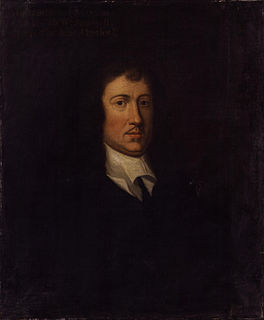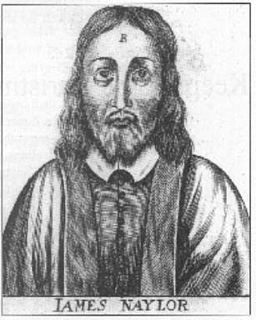 W
WRachel Bourchier, Countess of Bath, the wife of Henry Bourchier, 5th Earl of Bath (1587-1654), was an English noblewoman and writer, best known for her activities during the English Civil War.
 W
WCharles Louis, Elector Palatine KG was the second son of Frederick V of the Palatinate, the "Winter King" of Bohemia, and of Elizabeth Stuart, Queen of Bohemia and sister of Charles I of England.
 W
WCharles I was King of England, Scotland, and Ireland from 27 March 1625 until his execution in 1649. He was born into the House of Stuart as the second son of King James VI of Scotland, but after his father inherited the English throne in 1603, he moved to England, where he spent much of the rest of his life. He became heir apparent to the three kingdoms of England, Scotland, and Ireland in 1612 on the death of his elder brother Henry Frederick, Prince of Wales. An unsuccessful and unpopular attempt to marry him to the Spanish Habsburg princess Maria Anna culminated in an eight-month visit to Spain in 1623 that demonstrated the futility of the marriage negotiations. Two years later, he married the Bourbon princess Henrietta Maria of France.
 W
WCharles II was King of Scotland from 1649 until 1651, and King of Scotland, England and Ireland from the 1660 Restoration of the monarchy until his death in 1685.
 W
WWilliam Curtius (1599–1678), 1st Curtius Baronet of Sweden, FRS, was a diplomat representing the House of Stuart during the Thirty Years' War and the exile of Charles II. In later life, he served as Resident Ambassador of the English Crown in the Holy Roman Empire, and was head magistrate for two districts of the Electoral Palatinate.
 W
WWilliam Cavendish, 3rd Earl of Devonshire KB FRS was an English nobleman and politician, known as a royalist supporter.
 W
WJames Harrington was an English political theorist of classical republicanism. He is best known for his controversial publication The Commonwealth of Oceana (1656). This work was an exposition of an ideal constitution, a utopia, designed to facilitate the development of the English republic established after the regicide, the execution of Charles I in 1649.
 W
WFather John Huddleston was an English Roman Catholic priest, and a monk of the Order of St. Benedict who helped Charles II during his escape and was present when Charles converted to the Catholic faith on his deathbed.
 W
WLieutenant-General Michael Jones, circa 1606 to 10 December 1649, was an Irish-born soldier of Welsh descent who served in the War of the Three Kingdoms, primarily in Ireland.
 W
WMajor General Rowland Laugharne was a member of the Welsh gentry, and a prominent soldier during the Wars of the Three Kingdoms, in which he fought on both sides.
 W
WWilliam Levett, Esq., was a long serving courtier to King Charles I of England. Levett accompanied the King during his flight from Parliamentary forces, including his escape from Hampton Court palace, and eventually to his imprisonment in Carisbrooke Castle on the Isle of Wight, and finally to the scaffold on which he was executed. Following the King's death, Levett wrote a letter claiming that he had witnessed the King writing the so-called Eikon Basilike during his imprisonment, an allegation that produced a flurry of new claims about the disputed manuscript and flamed a growing movement to rehabilitate the image of the executed monarch.
 W
WGilbert Mabbot, alternately Mabbott, was the official licenser of the press from 1647 to 1649 and himself a pioneering journalist and publisher of newsbooks during the English Civil War period.
 W
WWilliam Marshall was a seventeenth-century British engraver and illustrator, best known for his print depicting "Charles the Martyr", a symbolic portrayal of King Charles I of England as a Christian martyr.
 W
WJames Nayler was an English Quaker leader. He was among the members of the Valiant Sixty, a group of early Quaker preachers and missionaries.
 W
WMountjoy Blount, 1st Earl of Newport, c. 1597 to 12 February 1666, was an English courtier and politician, who held a number of positions under Charles I of England and supported the Royalists in the First English Civil War.
 W
WJames Rochfort was a leading Lieutenant colonel in Oliver Cromwell's Army during the English Civil War. He was better known by the nickname Prime Iron Rochfort.
 W
WRobert Tatton was the High Sheriff of Chester between 1645 and 1646. A supporter of King Charles I in the English Civil War, Robert is perhaps best known for the ultimately unsuccessful defence of his family home, Wythenshawe Hall, during its three-month siege by a Parliamentary force in the winter of 1643/44.
 W
WJohn Vicars was an English contemporary biographer, poet and polemicist of the English Civil War. His best-known work is English Worthies or England's Worthies, whose full title is England's Worthies under whom all the Civil and Bloudy Warres since Anno 1642 to Anno 1647 are related.